Venerable Galboda Gnanissara Thero, Chief Incumbent of the Gangaramaya Temple, has been the guiding light that has exemplified the true teachings of Buddhism of equality and compassion. The Venerable Thero through strength and perseverance has made a difference in the lives of many regardless of religion, race or creed.
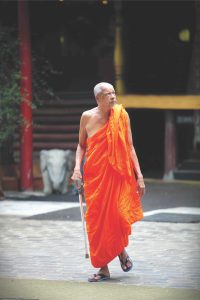
Born on December 13, 1943, just after midnight, Ven Galboda Gnanissara Thero’s birthday was registered as December 14 according to the Western method. However, Podi Hamuduruwo, affectionately known by those close to him, says that if it had been according to the Sinhala method, his birthday would be on December 13. He mentions this to demonstrate the deficiencies of superstitious beliefs on numbers as the date a person is born has no bearing; instead, his character and service to society are essential. Podi Hamuduruwo is not dissuaded by superstition and is inspired and motivated to work towards the betterment of the country according to the teachings of the Supreme Teacher, the Buddha.
Podi Hamuduruwo is no stranger to adversity. Throughout his journey, Thero has faced many close encounters with tragedy, which he has survived, emerging stronger and ready to face renewed challenges. An incident etched in Podi Hamuduruwo’s memory is a cobra bite he suffered at the age of three, which left him unconscious for three days. “I was with my elder brother at the Sadhu Perahera of our village temple when I saw the cobra and tried to touch it. My brother had run away. Incidentally, the same cobra had attacked the neighbor’s dog before, thus reducing its venom,” explained the Thero. Sri Lankan traditional Ayurvedic treatment saved his life.
At the tender age of ten, the young boy from Galboda, Matara, was ordained at the Gangaramaya Temple in Colombo on November 8, 1954. He was named Ven Galboda Gnanissara Thero. Since then, the young priest has been known as Podi Hamuduruwo. “I was ordained by the Maha Nayaka and Anu Nayaka of the Malwatte Chapter. The Maha Nayaka Thero hailed from the Sanga Paramparawa (lineage) of the great Ven Weliwita Sri Saranankara Thero, who was pivotal for the revival of Buddhism in Sri Lanka,” explained the Thero.
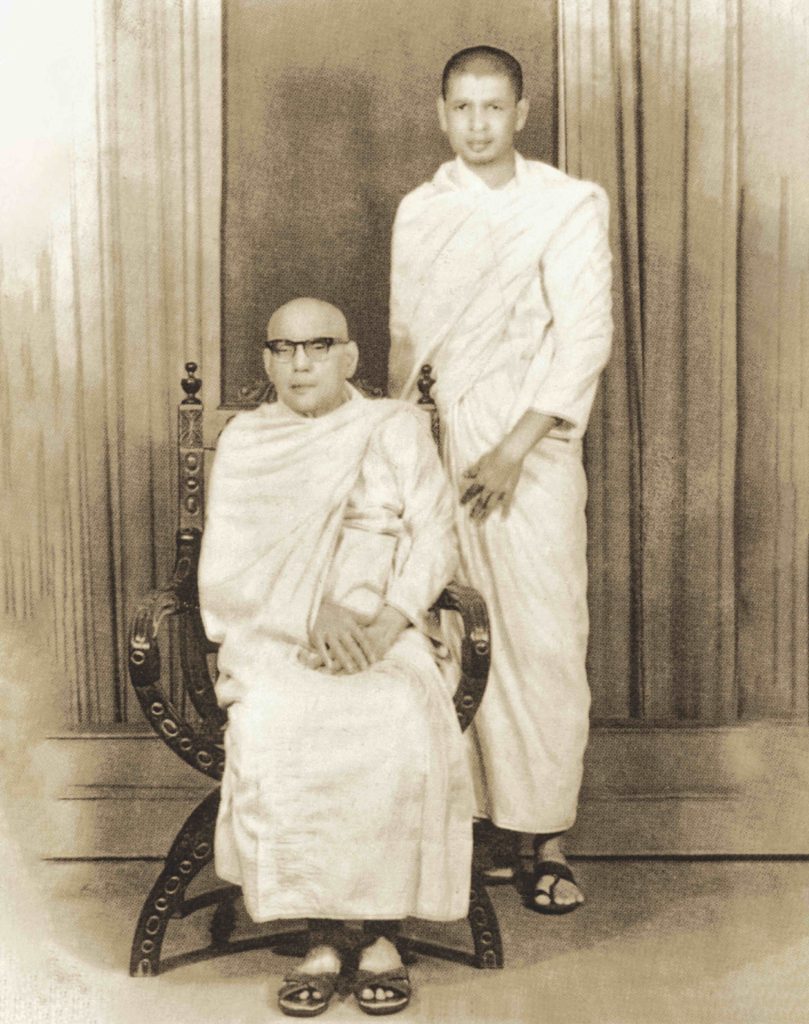
A young Podi Hamuduruwo with Chief Incumbent Ven Vacissara Thero.
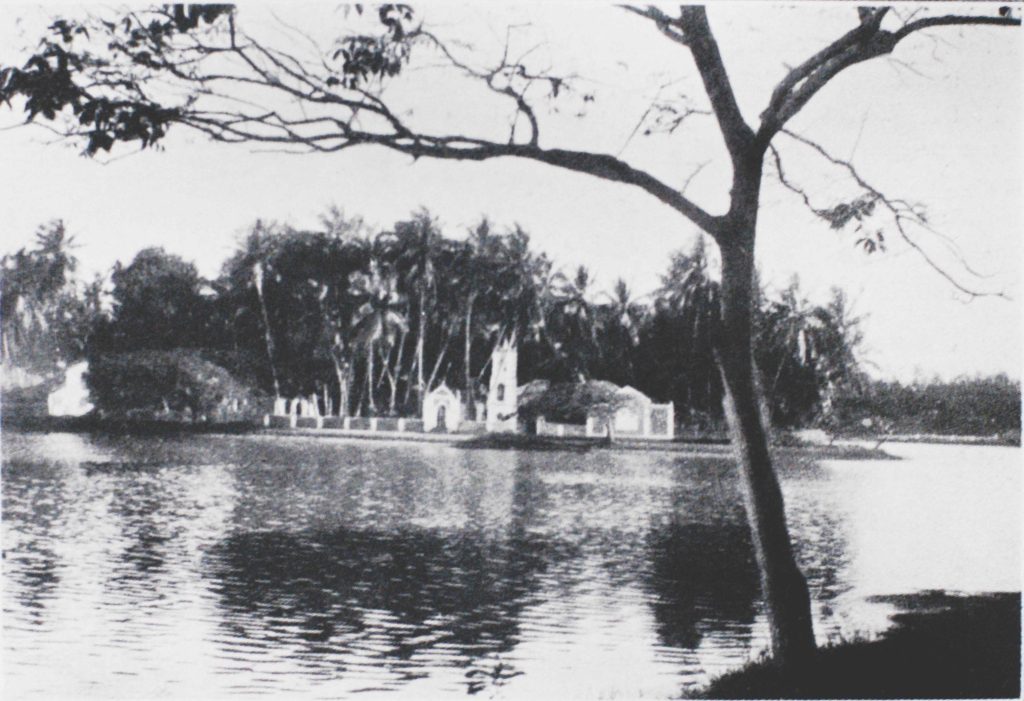
The Temple as it stood in its early years, the surroundings submerged by the Beira Lake.
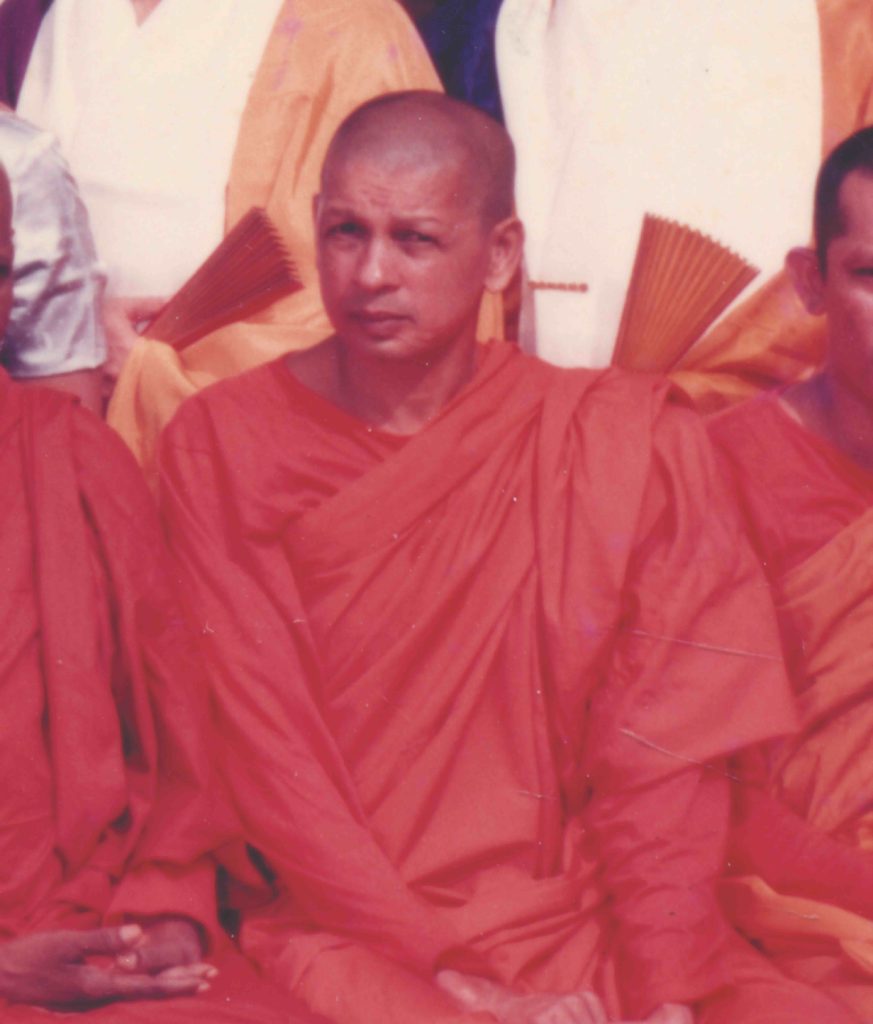
Young Podi Hamuduruwo.
His first sivura (robe) was presented by A Ratnayake, the then Minister of Internal Affairs, and the Dayaka responsible for the ordination was the son of D R Wijewardene, Dr. D E Wijewardene who was the father of the Sri Lankan engineer and inventor Ray Wijewardene.
The Gangaramaya Temple has consistently advocated for vocational training and skills development for the younger generation in Sri Lanka. Podi Hamuduruwo attributes this interest in technical and engineering aspects to his association with Ray Wijewardene. The Thero said, “Scotsman James Bollock was impressed upon seeing our Chief Priest Devundara Sri Jinarathana Thero recording information on Ola leaves and gifted a printing press manufactured in England to the temple in 1834. This was the first printing press in the country, and it later became a proofing press. Many books were printed by the Gangaramaya Temple, including the 1,800-page publication of the Pansiya Panas Jathakaya.”
Podi Hamuduruwo also acquired the knowledge and skills of printing from typesetting to the completion of printing. Citing that he was inspired by visits to vocational training centers operated by Christian churches, especially the Tewatte Basilica, Podi Hamuduruwo says the church should be appreciated for its contribution.
Podi Hamuduruwo epitomizes the philosophy of being strengthened by his experiences.
Striving towards the betterment of the youth in the country, in 1979, Podi Hamuduruwo’s dream saw fruition with the opening of the Sri Jinarathana Vocational Centre by President J R Jayewardene. The first course was iron melding and blacksmith work as tools are essential for the country’s livelihood. Tyre tube vulcanizing was a pioneering training program introduced by Thero, and relevant centers were established across the island. Podi Hamuduruwo recalls, “When Queen Elizabeth II visited Sri Lanka for the opening of the Victoria Dam, I too participated in the ceremony. Back then, roads were not very good, and many vehicles would have tire punctures. It was interesting to see many diplomatic vehicles at temple tire tube vulcanizing centers that day.” Printing was introduced to the curriculum at the Sri Jinarathana Vocational Training Centre, where the World Lutheran Church, Canada, donated an offset printing machine, camera, and plate maker – each of cutting-edge technology.
Though audio-visual methods for language teaching are used today in developed countries, this method was first introduced in temples. Buddhist priests would explain the Dhamma while showing murals on temple walls; thus, students could learn faster.
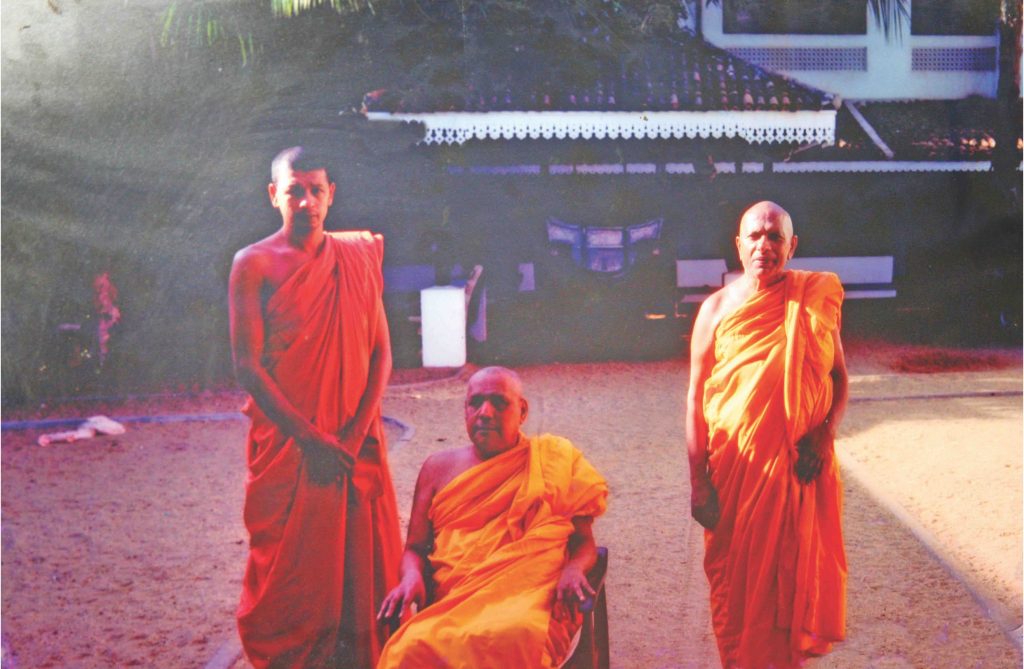
Podi Hamudurwo with Ven Devundara Sri Vacissara Thero and Ven Devundara Rathanajothi Thero.
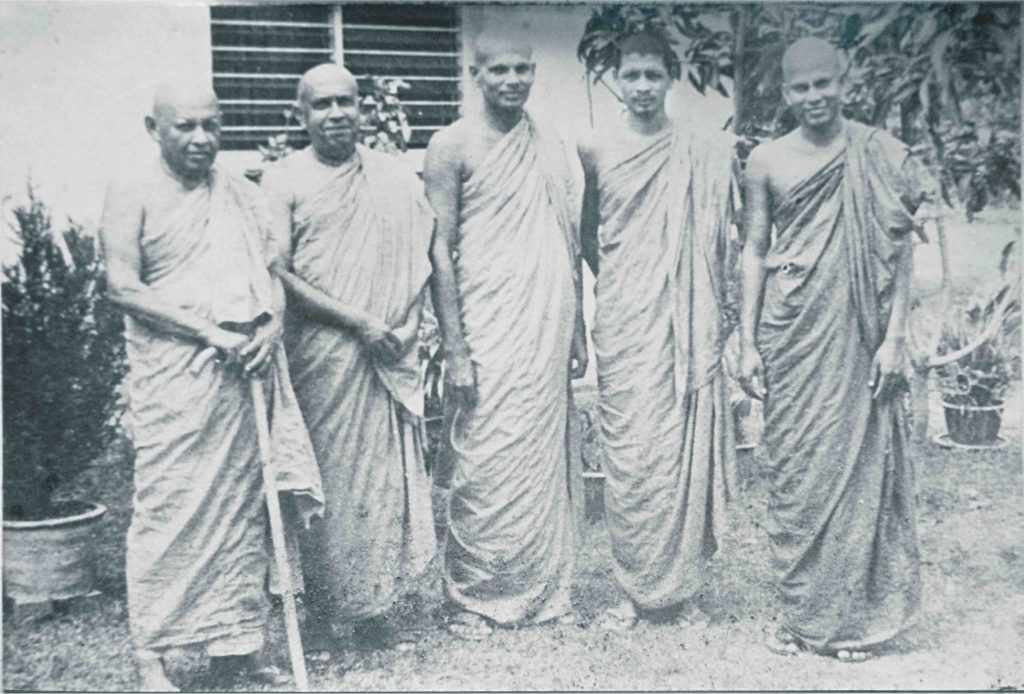
A young Podi Hamuduruwo with senior Buddhist priests.
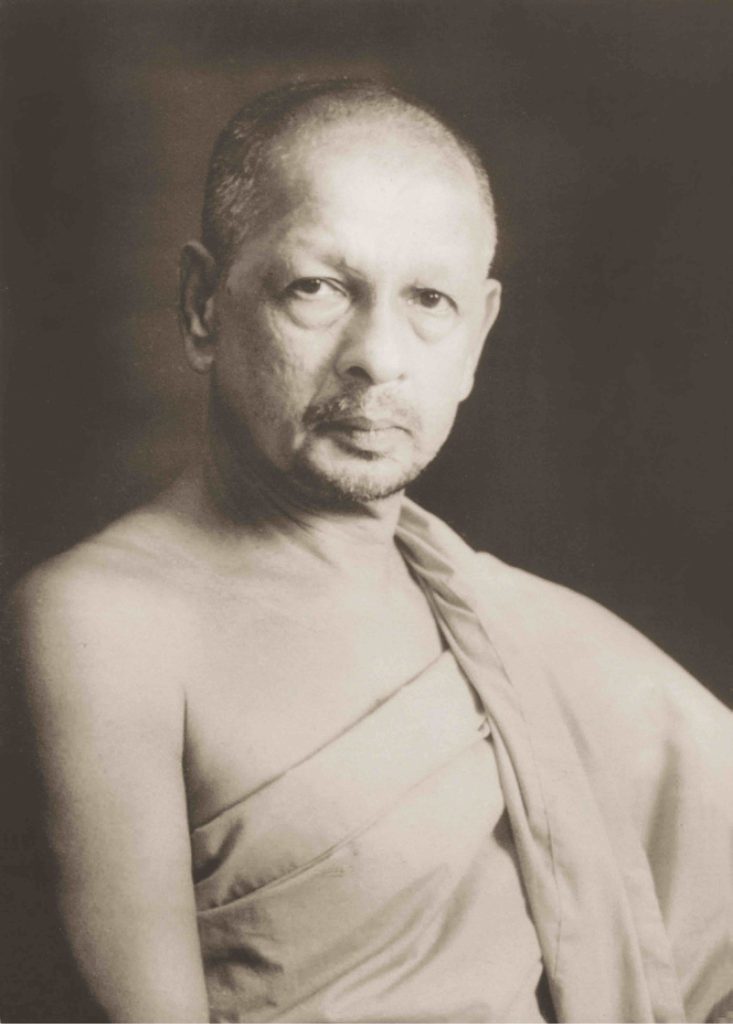
Podi Hamuduruwo as Chief Incumbent of Gangaramaya Temple.
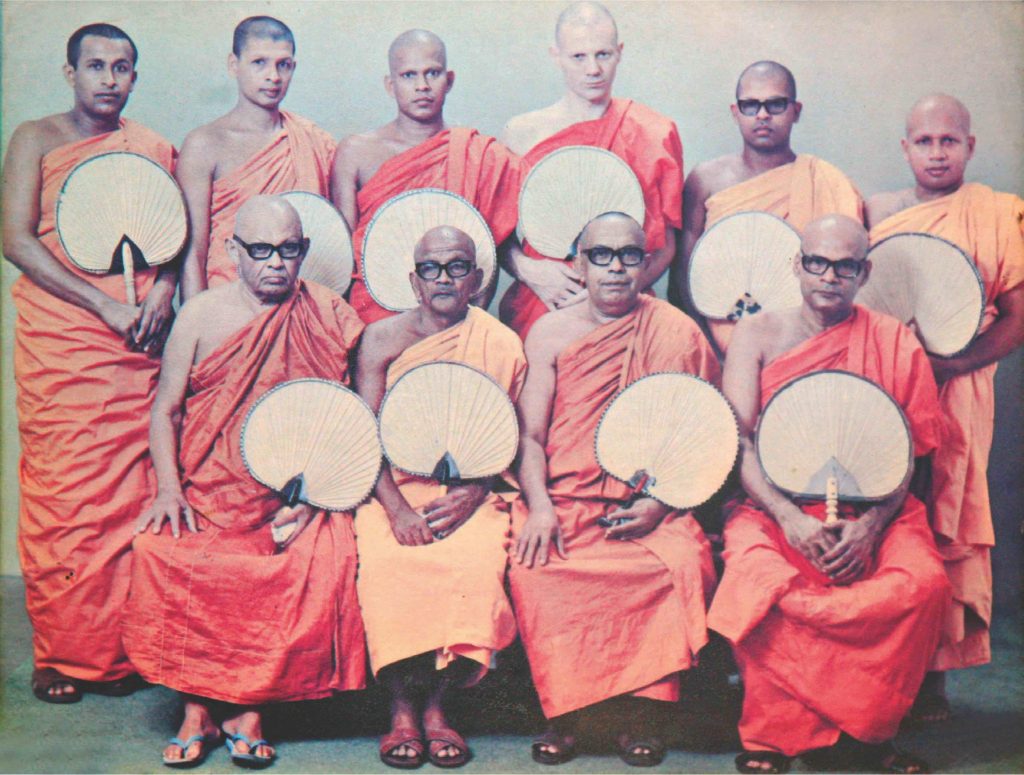
Podi Hamuduruwo among Buddhist clergy on a missionary tour to Malaysia and Singapore.
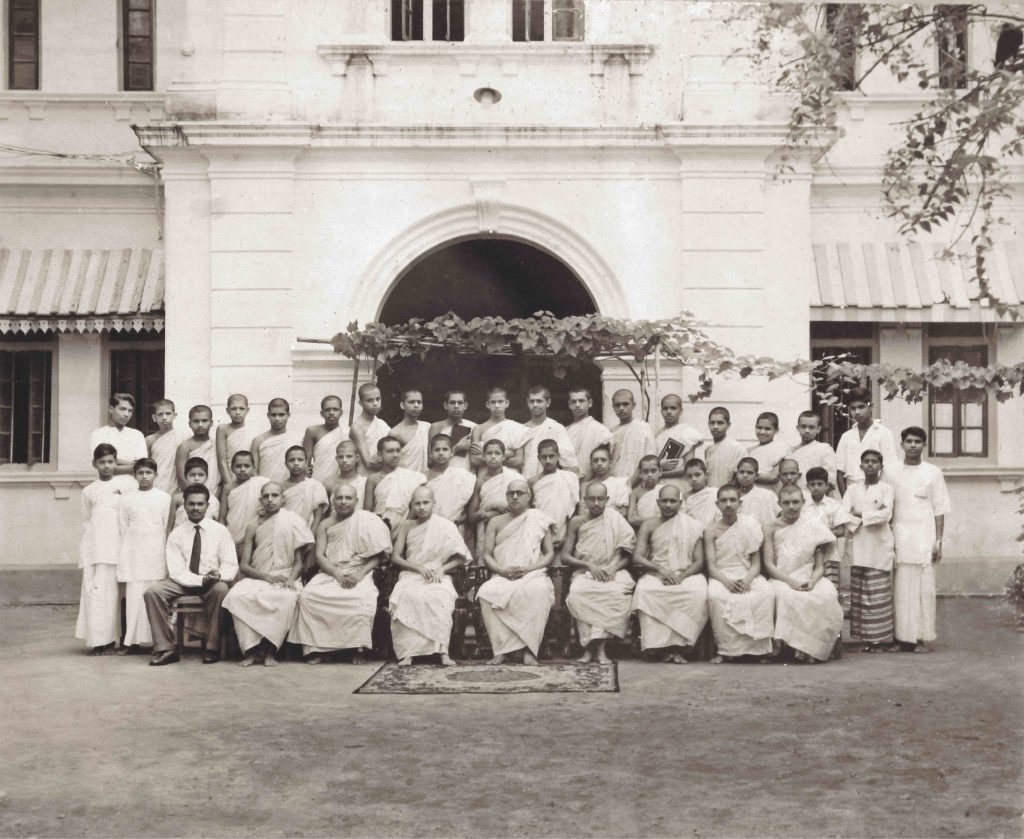
Podi Hamuduruwo (last row fourth from left) as a novice monk among students of Sri Gnanissara Pirivena.

Podi Hamuduruwo with Prime Minister Dudley Senanayake.
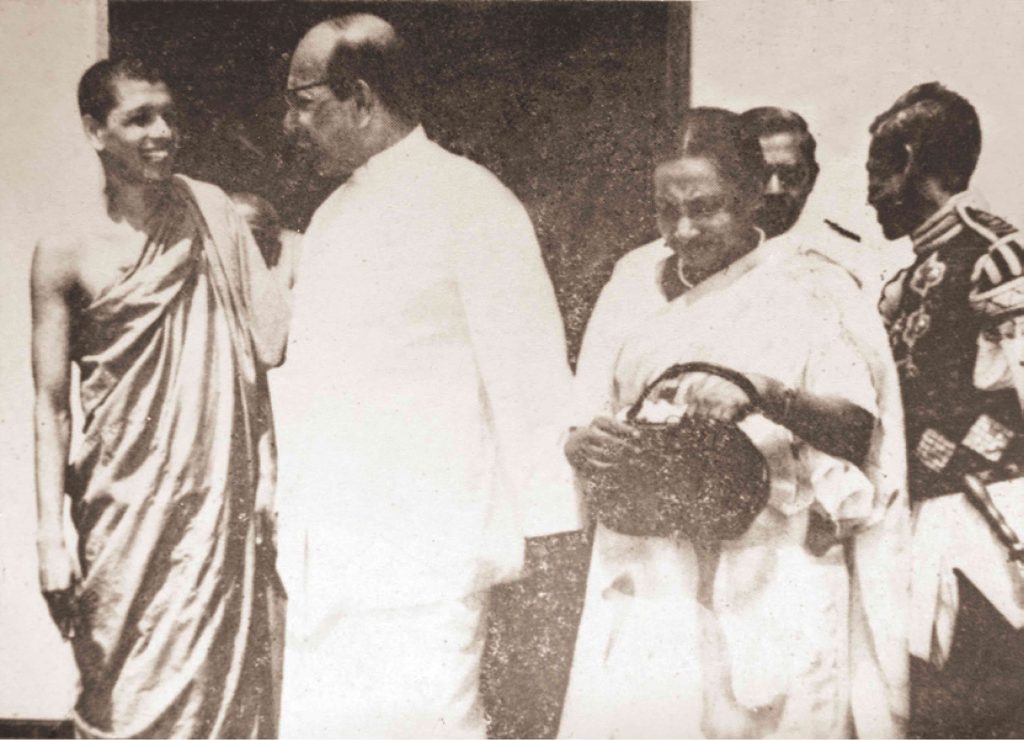
With Governor General William Goppallawa.

With President J R Jayewardene.
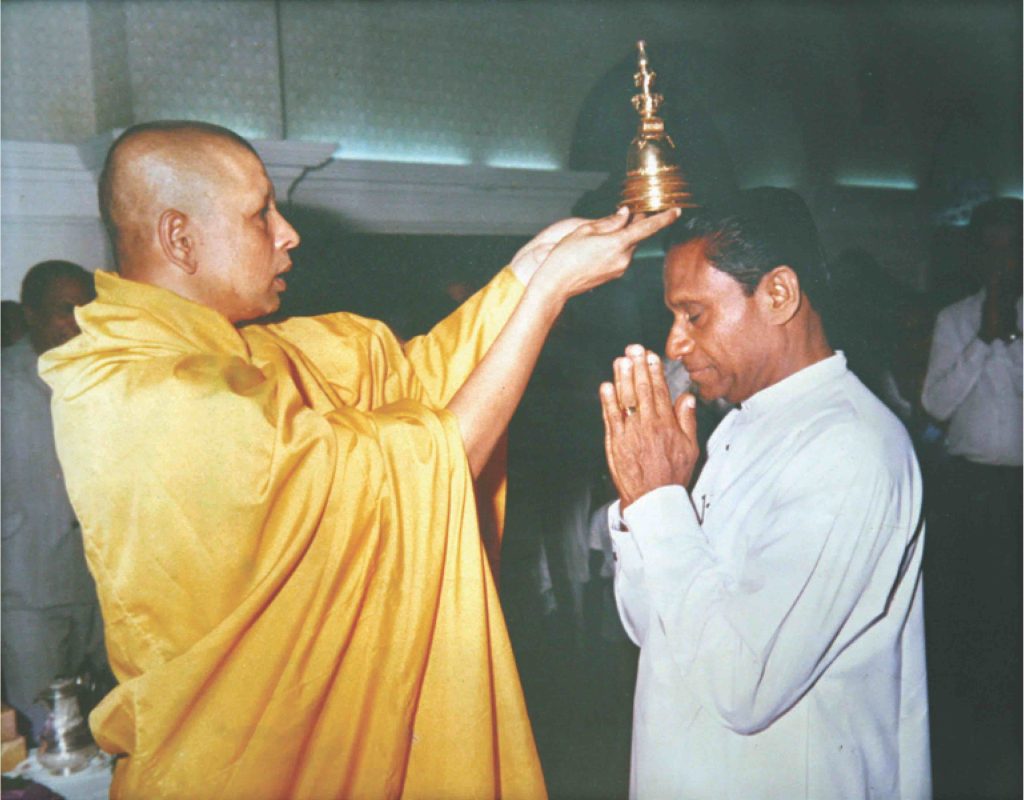
With President R Premadasa.

With President D B Wijetunga.
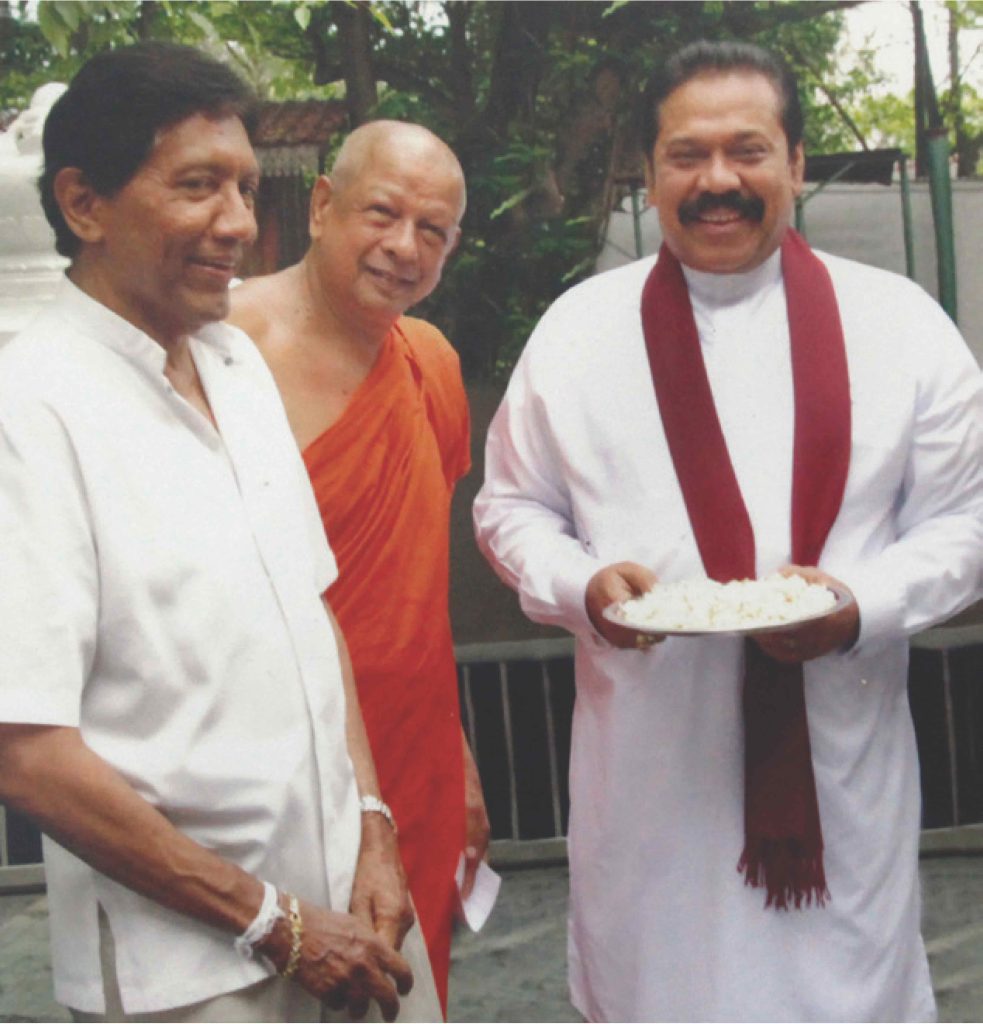
With President Mahinda Rajapaksa and Ranjith Wijewardene.
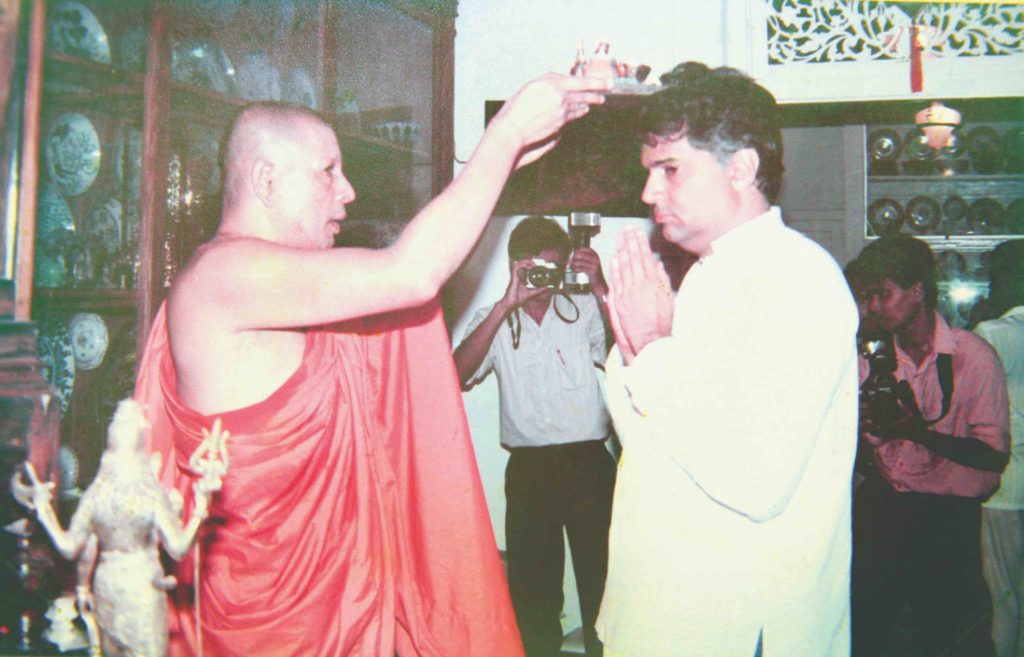
With Prime Minister Ranil Wickremesinghe.

With President Maithripala Sirisena.
“In 1971, I met with a motor accident near the Koggala airport where I sustained a serious injury. I traveled to England for my surgery. Once recovered, I visited the Language Centre at Oxford University, where I was introduced to the audio-visual technology used in teaching. I followed a course that was 50 pounds per semester. Sri Lankans could not take more than three pounds of foreign currency out of the country at that time. Due to the support of the Chief Priest of Malaysia and relatives of the Chief Incumbent of Gangaramaya Temple residing in the UK, I successfully completed my studies and purchased the necessary equipment.”
Subsequently, Podi Hamuduruwo used this knowledge to introduce audio-visual techniques for learning English in Sri Lanka. The language laboratory, with material sourced from the British Council, was opened in 1976 by Governor William Goppalawa.
Yet, Podi Hamuduruwo is saddened that this technology was not utilized by Sri Lankans, resulting in the country’s many skill shortcomings today. Although the Vocational Training Centre has grown in strength over the years, Thero explains youth are no longer interested in these fields as most prefer earning a daily wage over education.
Podi Hamuduruwo has constantly endeavored to instill good values in Sri Lankans, and, he shifted focus to promoting a healthy lifestyle. “We were born in the 1950s. Sri Lankans were healthy and strong back then, ready to face any challenge. They were talented and skilled. Yet, today, the young are plagued with health issues. We must speak about these matters and create awareness of healthy eating and clean water.”
Podi Hamuduruwo epitomizes the philosophy of being strengthened by his experiences. He has focused on creating awareness of kidney disease and promoting the consumption of clean water and nutritious meals.
Buddhism is a way of living; Podi Hamuduruwo exemplifies this daily. Each challenge he has faced has motivated the Thero to continue and do more for the people of Sri Lanka. Gangaramaya Temple is Podi Hamuduruwo.
Text and photos from Explore Sri Lanka previous issues.
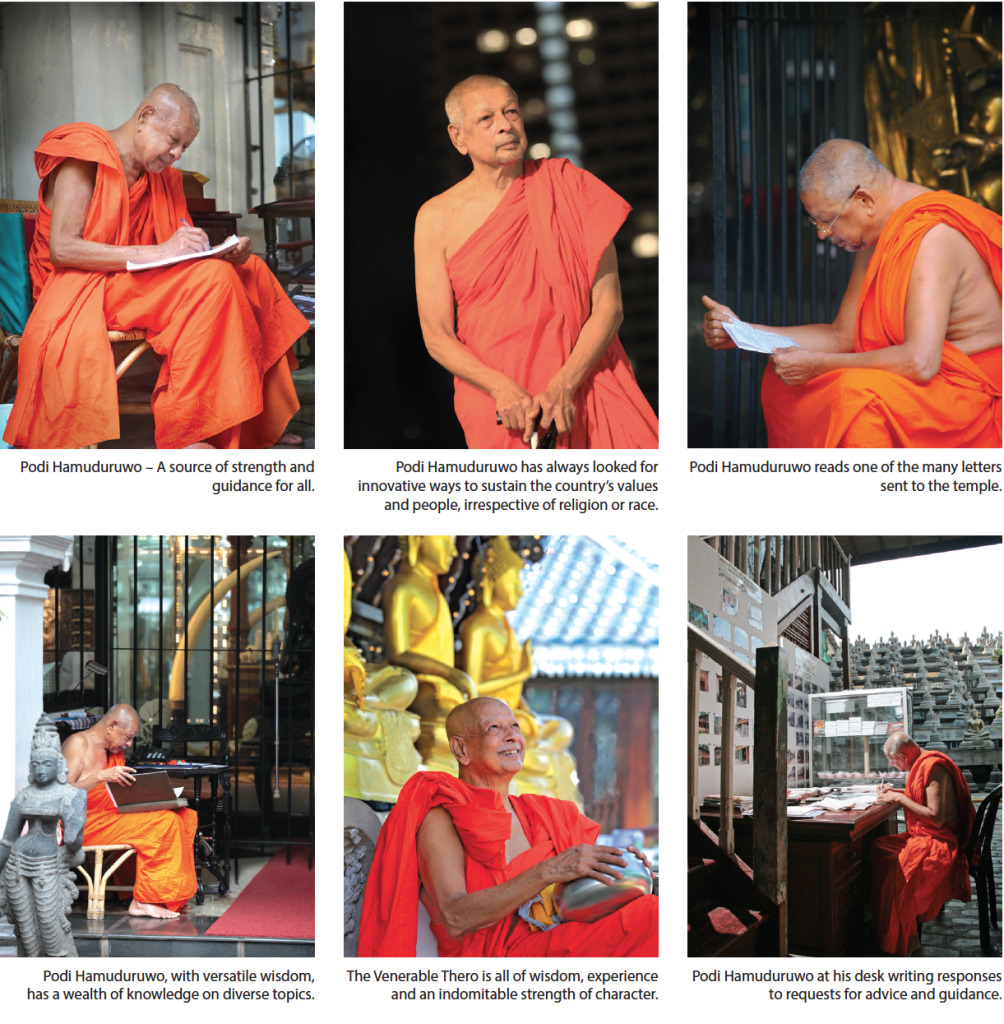
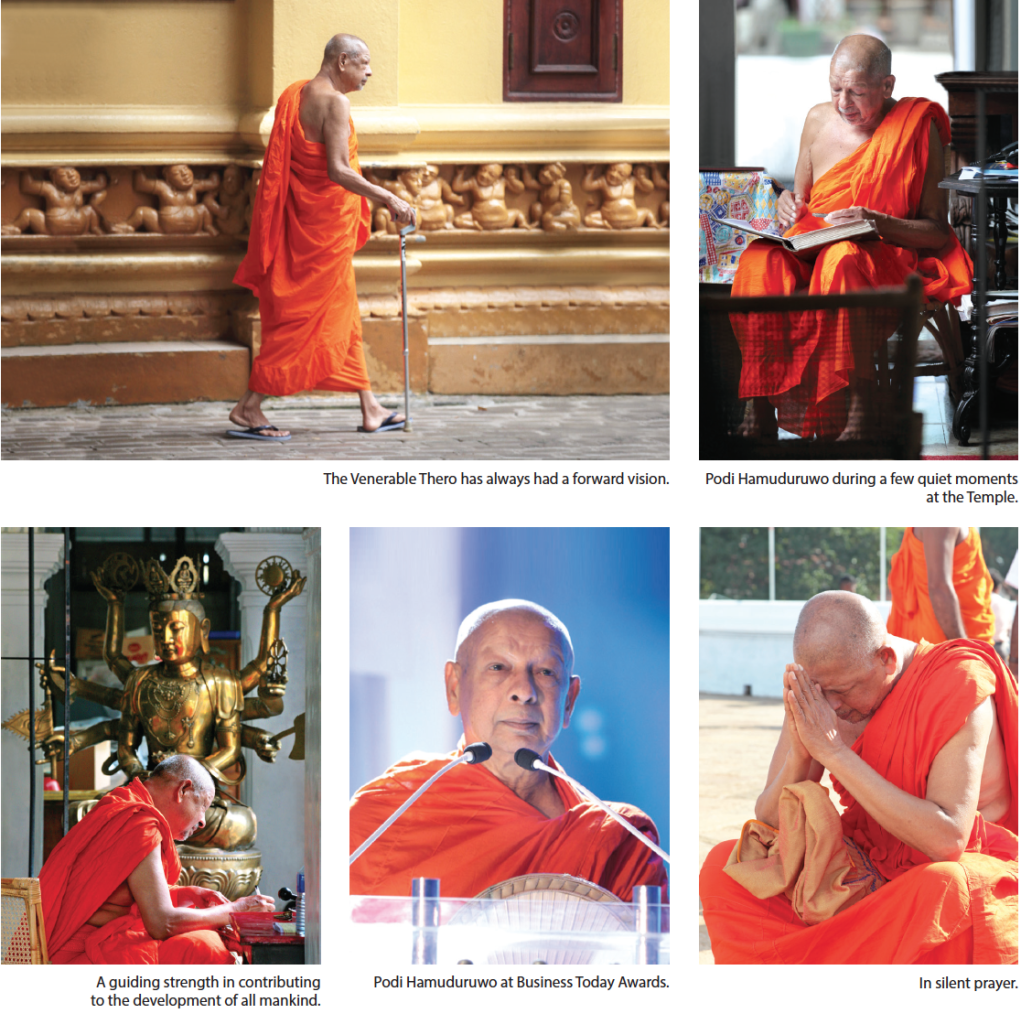
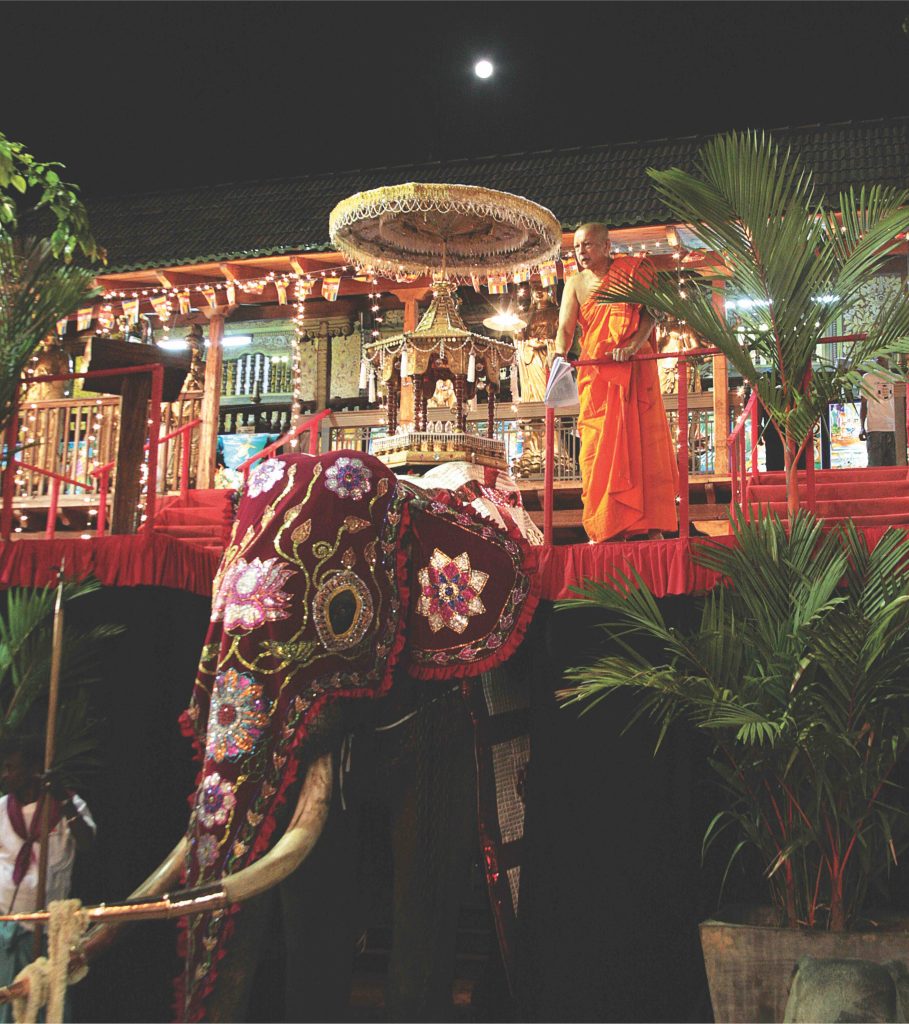
Podi Hamuduruwo and the Sacred Relic tusker at the commencement of the Perahera.


